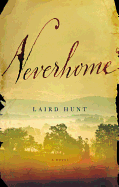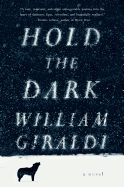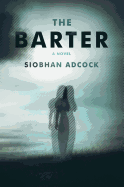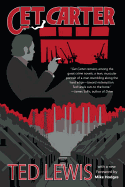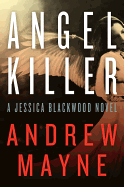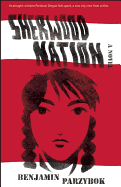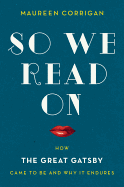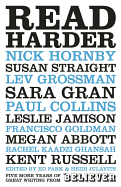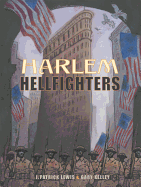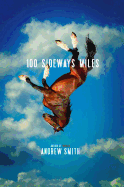 John Burningham was offered the opportunity to illustrate Sir Ian Fleming's Chitty Chitty Bang Bang (Jonathan Cape, 1964) almost immediately after winning the Kate Greenaway Medal--England's most prestigious accolade for an illustrated book for children--for his first picture book, Borka (Jonathan Cape, 1963). Fleming had already published his books about James Bond. Here Burningham reflects on their collaboration and on the 50th anniversary publication, recently released by Candlewick Press.
John Burningham was offered the opportunity to illustrate Sir Ian Fleming's Chitty Chitty Bang Bang (Jonathan Cape, 1964) almost immediately after winning the Kate Greenaway Medal--England's most prestigious accolade for an illustrated book for children--for his first picture book, Borka (Jonathan Cape, 1963). Fleming had already published his books about James Bond. Here Burningham reflects on their collaboration and on the 50th anniversary publication, recently released by Candlewick Press.
How did the manuscript for Chitty Chitty Bang Bang come to you?
I was asked if I wanted to do it, and of course I said, "Yes, I'd love to." I can't remember whether I had to submit an example of my work, I just remember being delighted to do it. It was a very prestigious piece of work.
[Fleming] died just before the publication of Chitty Chitty Bang Bang, which was a pity. He was not particularly old, but he wasn't well at that time of his life.
Did you ever meet Sir Ian Fleming?
I did meet him briefly. When I had finished the books [originally published as a trio], I met him in the office of Jonathan Cape. There was only one thing he wanted me to change, and that was to add a mark to a tobacco shop in Paris. The shops are called "Tabac" in France. They have a marker, a red-and-white stripe pole, or used to have, that came out at the top, and he wanted that put into one of the scenes in Paris. I look at the drawings, and I'm never sure whether I did it or not. If he hadn't liked something, he would have told you.
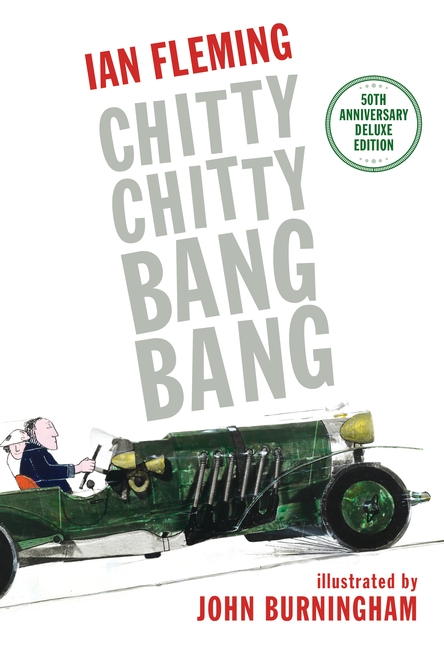 Prior to this project, you had written and illustrated your own work, Borka. Did illustrating Fleming's work pose new challenges for you?
Prior to this project, you had written and illustrated your own work, Borka. Did illustrating Fleming's work pose new challenges for you?
Yes, but at the same time, you're halfway there, aren't you? You don't have that problem of working out the story as well as doing the drawings. I haven't done a lot of illustration [for other authors] in my time. Wind in the Willows is about the only other one I've done.
What attracted you to the project as an artist?
It's a lovely challenge to make a flying car. It was a great adventure story for kids.
What materials did you use for the artwork? They have so much spontaneity.
I made a model of the car, which I hung up in my studio, then had it photographed for more different kinds of angles, and then added the background. They're a mixture. The model was the way I decided to do it. I used the photographs as the basis for the illustration.
You painted right on top of the photographs?
Yes. The first picture--with the car taking off over the traffic--that is probably a photograph of the car, which I then put the figures in afterwards, and did all that smoke and stuff. I've always used all kinds of stuff in pictures, and I still do.
We love the full-spread image of the car spilling Joe the Monster, Soapy Sam and Man-Mountain Fink onto the road.
That's the car being photographed, and it's hanging on fishing line. You move the car at speed toward the camera, so the camera records that sort of movement. The villains spilling I drew afterwards. I like certain bits of that image. The movement of the villains is not quite right for the speed of the car.
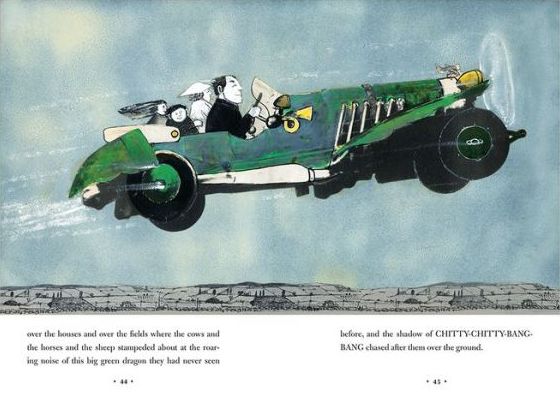 And the black-and-white images? Are those pen-and-inks and watercolor?
And the black-and-white images? Are those pen-and-inks and watercolor?
It's probably pen and ink and then in-fill with watercolor. I forgot to put the mouth in for the mother and the boy, I'm noticing.
What about siblings Jeremy and Jemima--did you spend time thinking about what they'd look like?
I didn't think they were that important, honestly. It's absolutely adventure-packed, that story. The way that Fleming does it, there's never a dull moment. There's always something happening.
Are you pleased with this new edition?
This is a compilation of the three original books. The reproduction is better than the original, and that is because it was re-photographed. We didn't want to send the artwork out to China, or wherever. The facilities now for reproduction are superior than they were when this book was first brought out. You've got more detail and it's a better production.
Good stories last. It's 50 years old, but it doesn't matter because it's a good tale. --Jennifer M. Brown
John Burningham: Chitty Chitty Bang Bang at 50




 John Burningham was offered the opportunity to illustrate Sir Ian Fleming's Chitty Chitty Bang Bang (Jonathan Cape, 1964) almost immediately after winning the Kate Greenaway Medal--England's most prestigious accolade for an illustrated book for children--for his first picture book, Borka (Jonathan Cape, 1963). Fleming had already published his books about James Bond. Here Burningham reflects on their collaboration and on the 50th anniversary publication, recently released by Candlewick Press.
John Burningham was offered the opportunity to illustrate Sir Ian Fleming's Chitty Chitty Bang Bang (Jonathan Cape, 1964) almost immediately after winning the Kate Greenaway Medal--England's most prestigious accolade for an illustrated book for children--for his first picture book, Borka (Jonathan Cape, 1963). Fleming had already published his books about James Bond. Here Burningham reflects on their collaboration and on the 50th anniversary publication, recently released by Candlewick Press. Prior to this project, you had written and illustrated your own work, Borka. Did illustrating Fleming's work pose new challenges for you?
Prior to this project, you had written and illustrated your own work, Borka. Did illustrating Fleming's work pose new challenges for you?  And the black-and-white images? Are those pen-and-inks and watercolor?
And the black-and-white images? Are those pen-and-inks and watercolor?